If you want to know about the introduction of landscaping and its role or about landscape or terminology used in landscape, please click the link.
The landscape has changed drastically from ancient times to the modern-day, reflecting the evolution of human civilization and its relationship with the environment.
Landscape Architecture
- Landscape architecture is concerned with the arrangement of land, water, plant forms, and structures, for their best and greater enjoyment.
- It deals with land-planning problems such as building sites, gardens, outdoor-living areas, playgrounds, and parks.
- It requires a knowledge of design and construction that overlaps in the fields of architecture, engineering, horticulture, botany, and other branches of the arts and sciences.
- A knowledge of landscape architecture, which helps people to achieve a better way of life through the fullest use of the out-of-doors, is especially important to the architect, land architect, draftsman, homeowner, landscape contractor, gardener, nurseryman, and realtor.
1) Landscaping in Ancient Times
- To understand the principles and problems underlying the present-day practice of landscape architecture, you should be aware of some of the achievements of the past in this field. These achievements have accompanied the development of architecture through the ages.
- The gardens of ancient Egypt reflected climatic, physical, and religious influences.

- The gardens of a high official, for instance, usually occupied a square of land and were surrounded by lofty walls.
- The dwelling houses within the walls were carefully hidden away and shaded by trees, and the grounds were enlivened by ponds, waterfalls, and green borders.
- In the middle of the gardens were vineyards and rows of trees.
- The gardens of the Persians by high mud walls.
- They path and low fences and embellished with little tunnels and blue-tiled pools, pavilions, kiosks, and canopied summer houses.
- Outdoor features in the early Greek cities included baths, stadiums, open-air theaters, porticoes, and colonnades.
- The monasteries of the Middle Ages in Europe grouped around central courtyards that were framed by colonnades and enriched with central fountains, beds of flowers, and statues of the Christian saints.
2) Renaissance gardens
- Many villas as of Renaissance Italy were distinguished, for their beauty.
- They were built upon and were closely adapted to the Italian hillsides.
- The major lines of the plans of those villas followed the slopes, with three or four terraces faced with stone and equipped with balustrades and steps.
- The lower level contained the flower garden proper and the principal approach, the second levels contained the house, and the upper levels included the woodland.
- Water was used to achieve spectacular effects.
- The Spanish gardens of the Renaissance were also notable.
- They occupied lofty sites and had arcaded courts.
- They made use of channels, fountains, and jets of water, rows of potted plants and tile decorations.
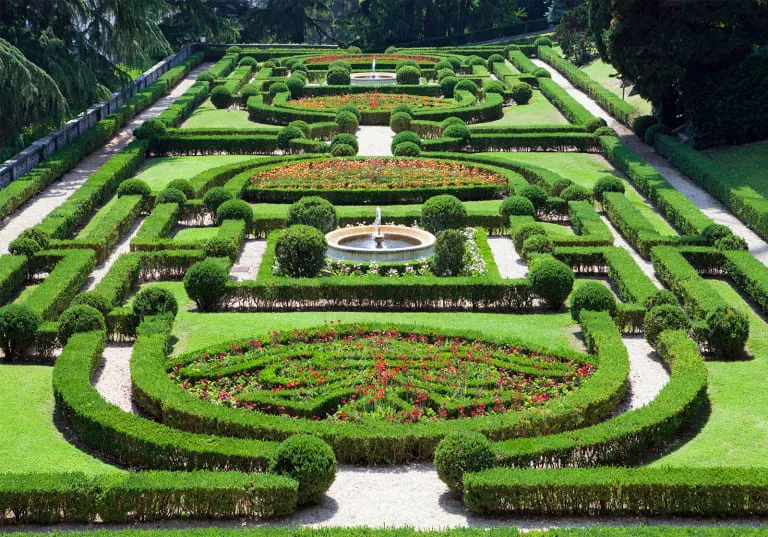
- Palms and orange trees framed more distant vistas.
- Some of the Renaissance gardens of France achieved great distinction.
- The grounds at the Palace of Versailles were among the most distinguished and spectacular.
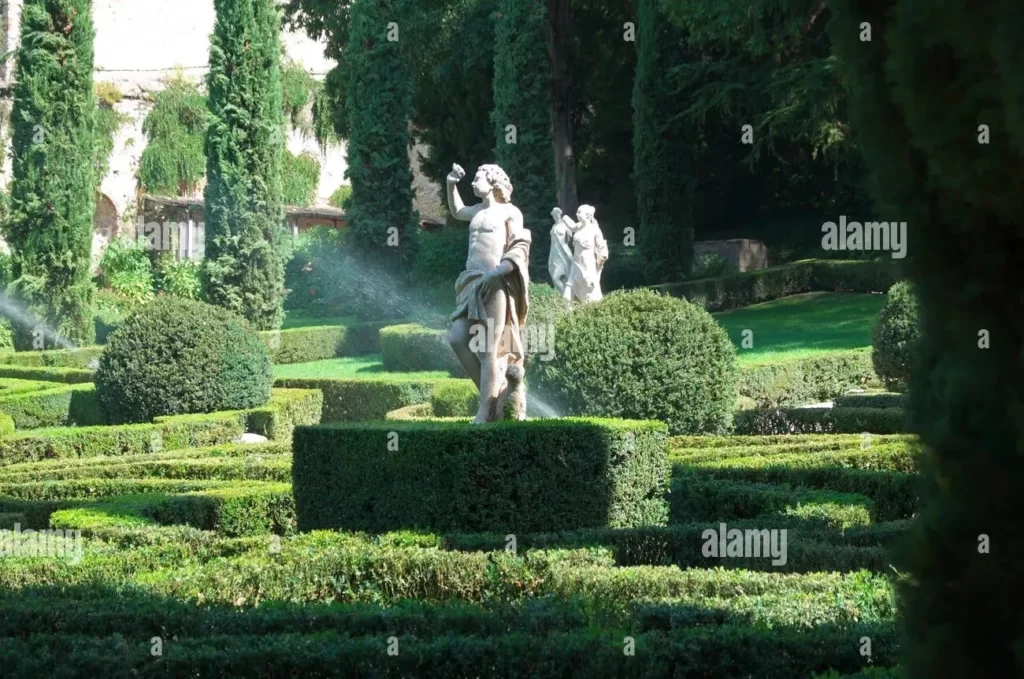
- They were developed in the so-called grand manner, with no stinting of money, labor, or talent.
- Among their most outstanding features were an intricate pattern of cross-connecting avenues, an amazing display of statues, cascades, and fountains, and a canal a mile or more in length.
- The basic characteristic of the Renaissance Garden’ was its formality; it was balanced and orderly. Its planes, patterns, and shapes were those of geometry, not of nature.
3) Chinese and Japanese Influences
- From the Orient, the landscape artist accepted two important concepts.
- The first is that nature itself is beautiful and good.

- Chinese painting reflects this attitude toward nature.
- To the Chinese painter the untouched landscape is the noblest subject matter.
- The second concept is that if native forms are the most beautiful, they are to be copied literally.
- Thus, man-made forms are abandoned in favor of naturalistic ones.
- Chinese gardens represented or suggested actual scenes, hills, and streams.
- Paths ran through the gardens in pebbled patterns; doors were often circular, or octagonal. Weird, contorted, water-worn rocks and petrified plant forms were used as sculpture, along with guardian dogs and other features of stone.
- Water flowed quietly or lay calmly in lakes or ponds.
- The Japanese derived their landscape inspiration from the Chinese and included in their layout’s meaningful stones and stone lanterns, trees, pagodas, arched bridges, and characteristic fences and gates.
- While much of the spirit of the informal and naturalistic garden came from the Far East, it was developed markedly in eighteenth-century England.
- In the United States the informal garden did not become popular until after 1800.
4) Landscape Design in the United States
- Landscape design in the United States has certain qualities in common with all the great landscape traditions of the world: Chinese, Japanese, Persian, English, Spanish, French, and Italian.
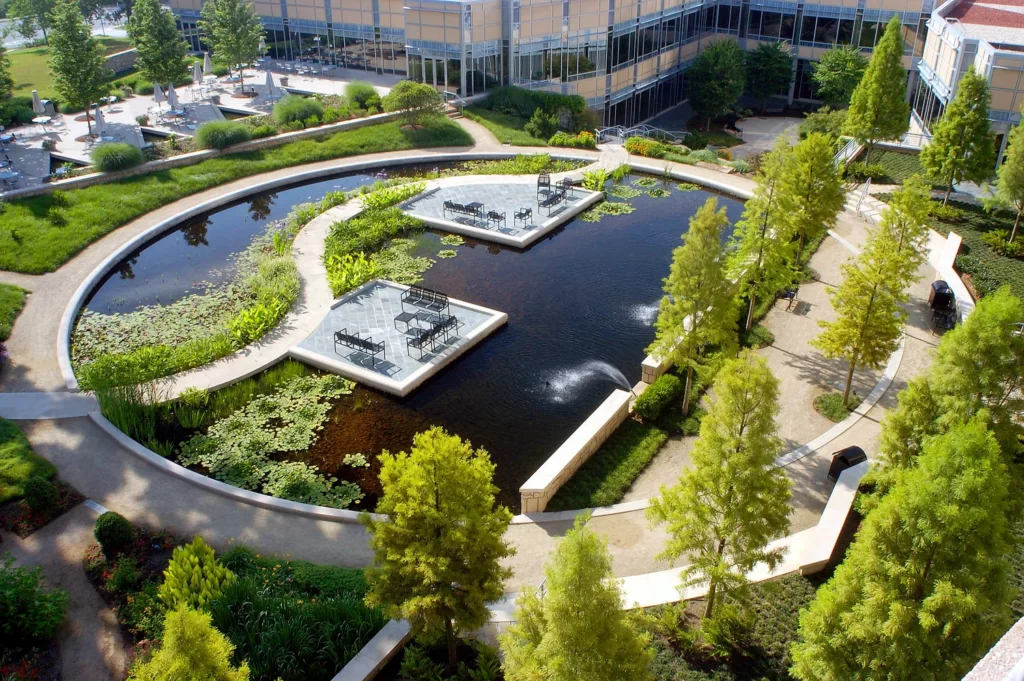
- Originally, these traditions were localized in certain sections of the country: the French influence was evident in New Orleans; the English, in New England; the Spanish, in California.
- Today, with the development of rapid methods of transportation and communication, sectional differences in the United States have almost disappeared, so that among contemporary gardens, the typical New England or California garden, for instance, is very rare.
5) New Expression in Landscapes
- As you have seen, landscape design has developed along the lines of two principal traditions, the formal and the informal.
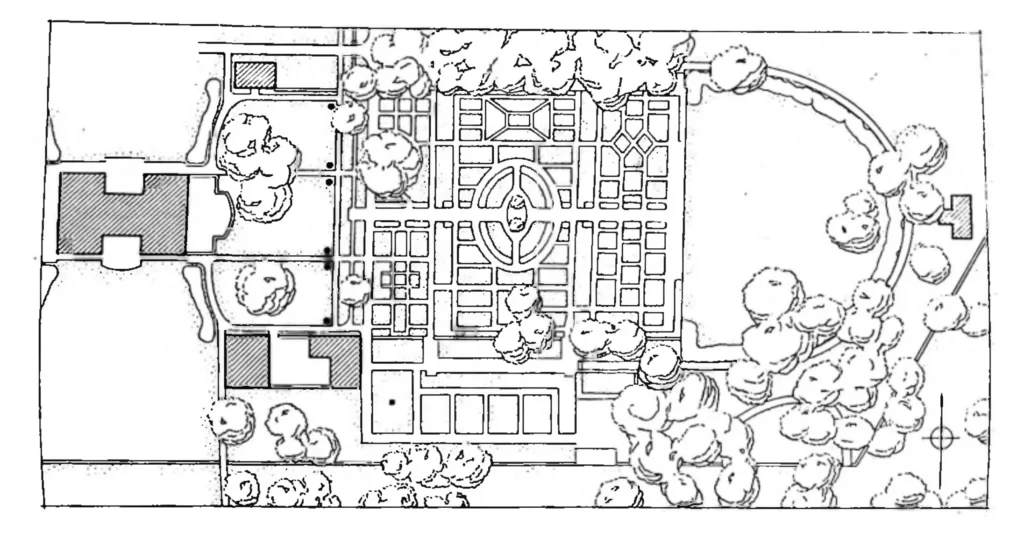
TYPICAL FORMAL LANDSCAPE
- The formal tradition, as shown in Figure above, has behind its elements of order, proportion, rational planning, and beauty.
- It revealed an intimate formality in the earlier English gardens Too often, however, the formal tradition led to a slavish regard for preconceived patterns and designs, and to undue drafting board influence.
- The informal type of landscape design was irregular, informal, simple.
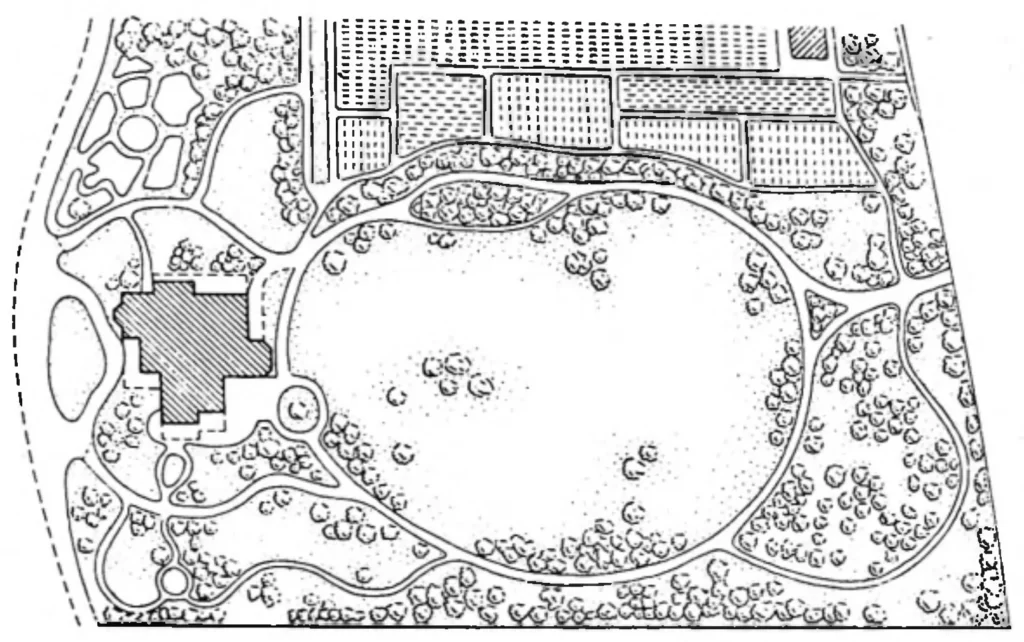
TYPICAL INFORMAL LANDSCAPE
- An informal landscape design is shown in Figure above. The informal design reached its lowest status when it included a careless scattering of plants and meaningless irregularity.
6) Modern landscapes
- Today we have a new conception of landscape design, in which not just views but also the use of space, space relations, and new materials, as well as freedom of form, are important considerations.
- The design may be formal or informal, or a combination of the two.
- Perhaps the biggest change that has occurred in landscape architecture is in the concept of the relation between house and garden.
- Until recent years the garden was designed to walk in or through.
- Today the garden is designed to live in, and the use of glass walls has made the garden a part of the living area of the house.
- The use of glass, more than anything else, is responsible for the great interest today in Japanese gardens, since the Japanese with their sliding walls have for centuries done away with the ironclad division between the indoors and the outdoors.
i) Utility and Beauty

- The business of landscape architecture is to achieve utility and beauty in the out-of-doors.
- This means that the layout, including construction features, must be practical and functional, and must be artistically composed.
- To be functional, the layout must operate smoothly and conveniently and fit the topography and surroundings as well as climatic conditions.
- Beauty in a landscape usually requires the consideration of certain factors of architectural design.
ii) Design Factors
Landscape architecture, like building architecture, is concerned not only with construction but also with such factors of design as scale, unity, proportion, contrast, color and emphasis.
Scale
- The term “scale” as applied to a building is used to describe the sizes of the parts of a building, such as windows and doors, in relation to their purposes and uses.
- Since buildings are built only for use by people, the scale should be selected with this fact in mind.
- The scale for a landscape design should be determined in the same manner.
- Whether the scale of a design is large or small, is, therefore, determined by the relation which certain of its parts bear to the requirements of man.
- Landscapes may vary in scale according to their purposes.
- In the garden for a residence, for instance, the parts are made small in scale.
- But in the landscaping for a government building, the parts are made larger and more impressive.
- In other words, the scale may be larger in public and important landscapes than in domestic landscapes.
- In any design, however, the scale should be uniform throughout.
Unity

- Any landscape design must have unity; that is, the different parts of the design must be united and should express their purpose in a single harmonious composition.
- Where the landscaping supplements a building, landscaping and building must combine to produce a harmonious whole.
Proportion
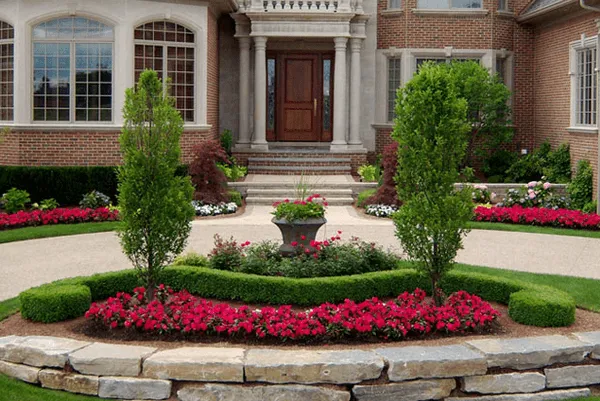
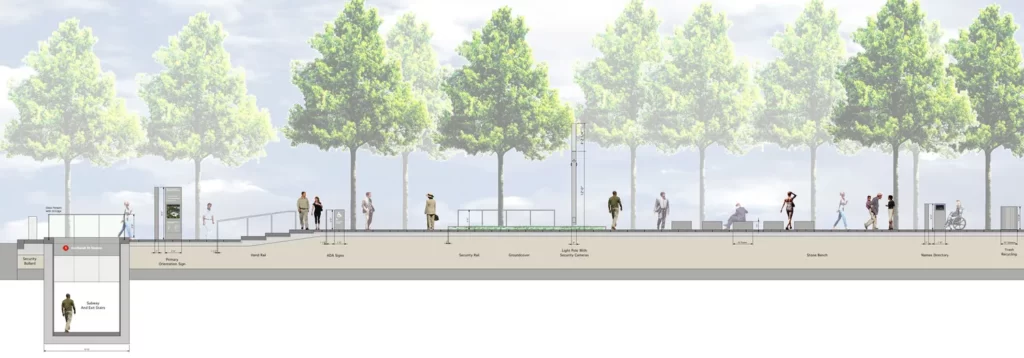
- Proportion is the relation of the shapes of the various features and parts of a landscape design to each other.
- There must be a harmonious relation, between the various details and the masses of a design, as well as between the masses themselves.
- Proportions cannot be determined by any magic general formula.
- Proportions are conditional by function and by construction. Proportion is closely allied to scale.
- A landscape design, for instance, whose proportions are pleasing at intimate scale might be disastrous if the same proportions were duplicated at monumental scale.
Color
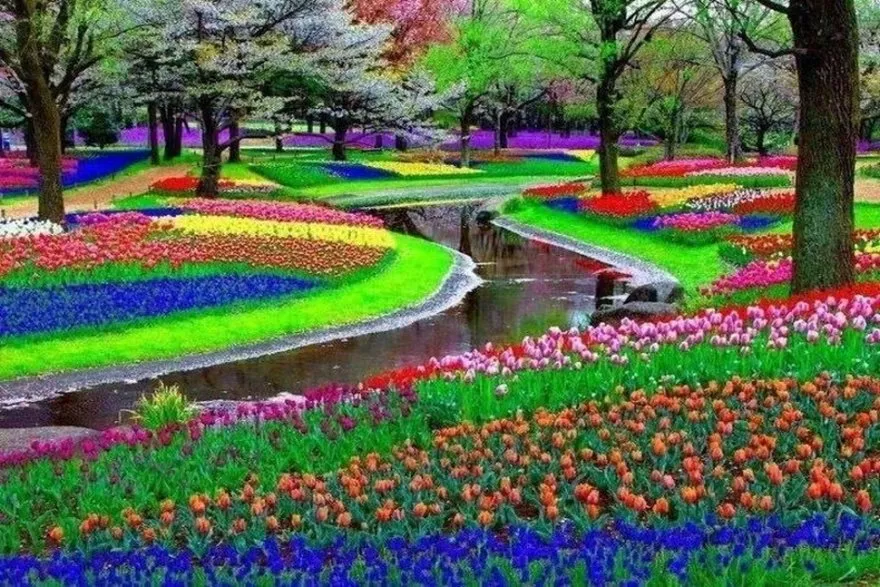

- The color of the various parts of a landscape design must be harmonious, regardless of the materials used.
- Where the landscaping adjoins a building, the color of the landscaping must be in harmony with the color of the building.
Contrast
- Contrast in landscape design means variety in design. It should not be so apparent as to produce unharmonious results or to affect the unity of the design.
- Contrast may occur in form, size, color, or texture. It adds variety and interest to a design.
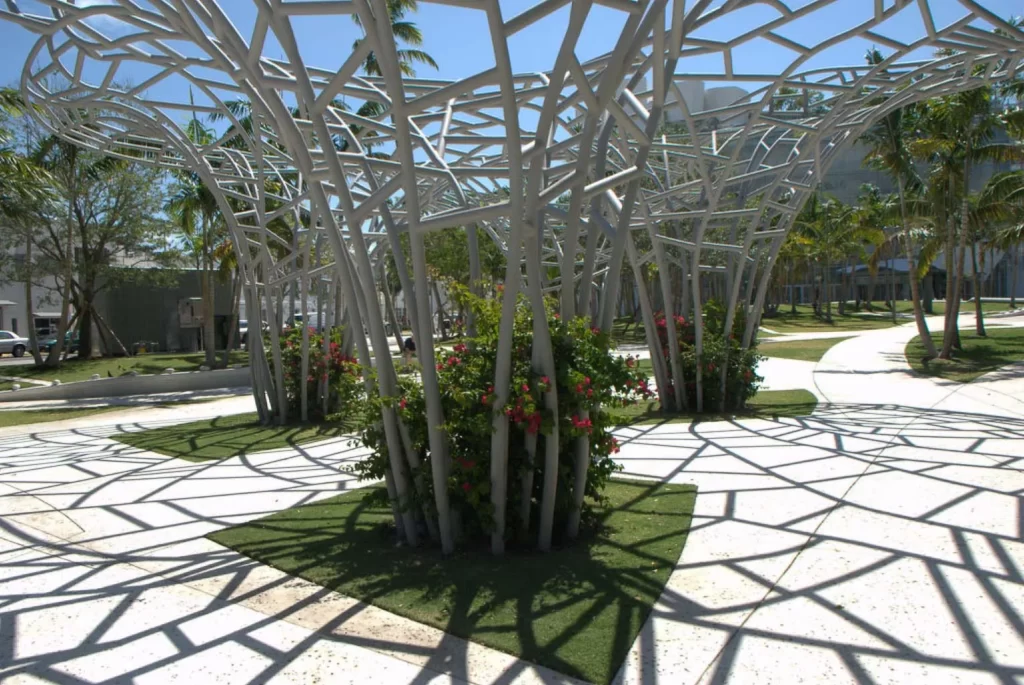
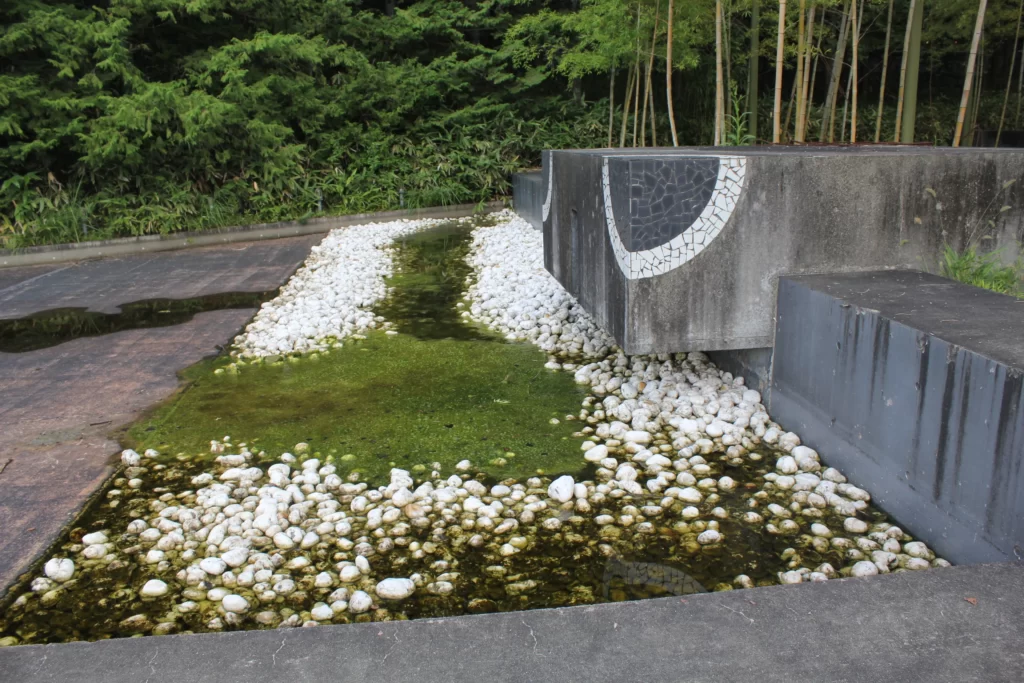
- A common contrast is dark against light, as, for example, dark foliage against a light building.
- Contrasts in color and texture are shown in figure above in the different values provided by the walk, the lawn, the flowers, and the shrubs.
Emphasis
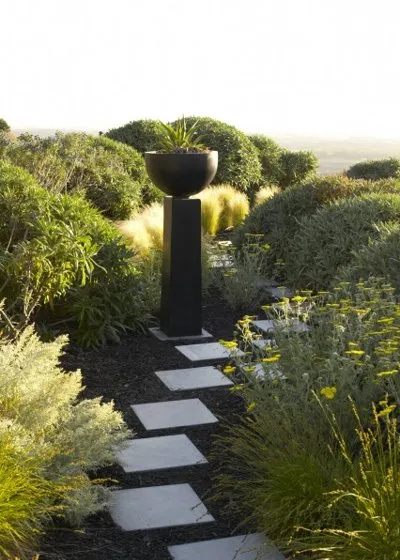

- The landscape architect tries to give satisfying form to an area and to the three dimensional parts that compose it, while at the same time fulfilling various practical needs.
- He must consider the different ways of covering floor areas, the different types of enclosures and kinds of ceilings.
- All aspects must be thought of in relation to one another.
- After these matters have been weighed, the landscape architect may consider the details.
- One of his early decisions will be the relative emphasis he wishes to give to the various parts of his composition, and what part he wishes to make the center of interest.
7) Summary
- Landscape architecture involves much more than planting a few shrubs around a building after the building has been completed.
- The primary objective of landscape architecture is to achieve beauty and utility in the fullest use of the out-of-doors.
- It is concerned with the arrangement of natural and man-made forms, and with land-planning problems of every kind.
- It requires a knowledge not only of design but also of construction.
- The landscaping of a building should be planned when the building is being planned.
- The building should look as if it belongs to the site, and the site should blend with the surroundings.
- Proper landscaping can provide a beautiful setting for a well-designed building. By providing shade and windbreaks, it can make a building more comfortable.
- The history of landscape architecture covers centuries and has developed along the lines of two principal traditions, the formal and the informal.
- For an appreciation of landscape architecture, you should be aware of past achievements as well as of contemporary movements in this field.
- In recent years the biggest change that has occurred in landscape architecture is in the concept of house and garden.
- Formerly, the garden was designed to walk in or through.
- Today the garden is designed as a part of the living area of the house.
Overall, the evolution of landscapes over time is a reflection of the complex interplay between natural and human factors, with each period leaving its mark on the world around us.